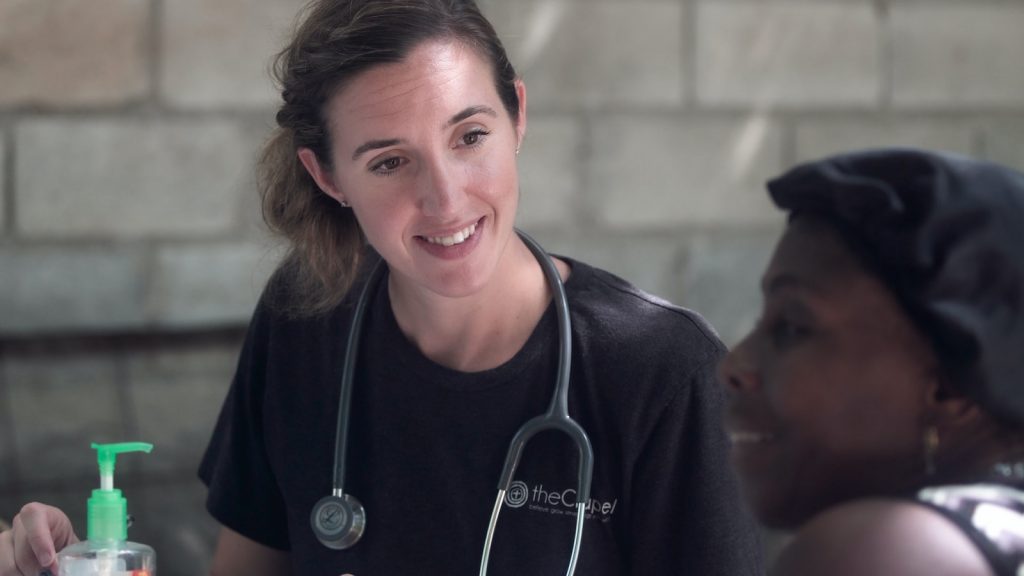Introduction
Student loan forgiveness programs have become increasingly popular in recent years as more and more individuals struggle to repay their student loans. These programs offer borrowers the opportunity to have a portion or all of their student loan debt forgiven, relieving them of the financial burden that comes with high monthly payments. However, understanding the different types of forgiveness programs and their eligibility criteria is crucial in order to take advantage of these opportunities. This article will provide a comprehensive guide to student loan forgiveness programs, including an overview of the different types, eligibility criteria, application process, pros and cons, common misconceptions, alternatives, credit score impact, tax implications, and recommendations for choosing the right program.
Understanding the Different Types of Student Loan Forgiveness Programs
There are several different types of student loan forgiveness programs available to borrowers. Each program has its own specific requirements and benefits. Some of the most common types of forgiveness programs include:
1. Public Service Loan Forgiveness (PSLF): This program is designed for individuals who work in public service jobs, such as government or non-profit organizations. Borrowers who make 120 qualifying payments while working full-time for a qualifying employer may be eligible to have their remaining loan balance forgiven.
2. Teacher Loan Forgiveness: This program is specifically for teachers who work in low-income schools or educational service agencies. Eligible teachers can have a portion of their federal student loans forgiven after completing five consecutive years of teaching.
3. Perkins Loan Cancellation: This program is available to individuals who have Perkins Loans and work in certain professions, such as teaching, nursing, or law enforcement. Borrowers may be eligible to have a portion or all of their Perkins Loans cancelled after a certain number of years of service.
4. Income-Driven Repayment Plans: These plans are not technically forgiveness programs, but they can lead to loan forgiveness after a certain number of years of making payments based on your income. There are several different income-driven repayment plans available, including Income-Based Repayment (IBR), Pay As You Earn (PAYE), and Revised Pay As You Earn (REPAYE).
5. Closed School Discharge: This program is for borrowers whose school closed while they were enrolled or shortly after they withdrew. If you were unable to complete your program of study due to the closure, you may be eligible to have your federal student loans discharged.
6. Total and Permanent Disability Discharge: This program is for borrowers who are totally and permanently disabled and unable to work. If you meet the eligibility criteria, you may be able to have your federal student loans discharged.
Eligibility Criteria for Student Loan Forgiveness Programs
Each student loan forgiveness program has its own specific eligibility criteria that borrowers must meet in order to qualify for forgiveness. It is important to carefully review the requirements for each program to determine if you are eligible. Some common eligibility criteria for forgiveness programs include:
– Being employed in a qualifying profession or working for a qualifying employer
– Making a certain number of qualifying payments
– Working full-time or part-time, depending on the program
– Meeting income requirements for income-driven repayment plans
– Having specific types of federal student loans
– Meeting specific service requirements for certain programs
It is important to note that eligibility criteria can vary depending on the program and may change over time. It is always a good idea to check with the specific program or your loan servicer for the most up-to-date information.
How to Apply for Student Loan Forgiveness Programs
Applying for student loan forgiveness programs can be a complex process, but with the right information and guidance, it can be done successfully. Here is a step-by-step guide to applying for forgiveness:
1. Determine which forgiveness program you are eligible for: Review the eligibility criteria for each program and determine which one(s) you qualify for based on your profession, employer, loan type, and other factors.
2. Gather the necessary documentation: Each forgiveness program requires specific documentation to support your application. This may include proof of employment, loan statements, tax returns, and other financial documents. Make sure to gather all the necessary paperwork before starting the application process.
3. Complete the application: Once you have gathered all the required documentation, you can begin the application process. This may involve filling out an online form, submitting paper forms, or contacting your loan servicer directly. Follow the instructions provided by the program or loan servicer to ensure that your application is complete and accurate.
4. Submit your application: After completing the application, submit it to the appropriate program or loan servicer. Keep copies of all documents for your records.
5. Follow up on your application: It is important to follow up on your application to ensure that it is being processed correctly. Keep track of any correspondence or communication from the program or loan servicer and respond promptly to any requests for additional information.
Pros and Cons of Student Loan Forgiveness Programs
Student loan forgiveness programs offer many benefits to borrowers, but they also have some drawbacks. It is important to weigh the pros and cons before deciding if forgiveness is the right option for you. Some advantages of forgiveness programs include:
– Reduced or eliminated student loan debt: The most obvious benefit of forgiveness programs is that they can significantly reduce or eliminate your student loan debt, providing financial relief and allowing you to move forward with your life.
– Lower monthly payments: Many forgiveness programs offer income-driven repayment options, which can lower your monthly payments based on your income and family size.
– Public service opportunities: Some forgiveness programs are specifically designed for individuals who work in public service jobs, providing an incentive for borrowers to pursue careers in these fields.
However, there are also some disadvantages to consider:
– Lengthy repayment periods: Many forgiveness programs require borrowers to make a certain number of payments over a period of several years before they are eligible for forgiveness. This means that it may take a long time to have your loans forgiven.
– Limited eligibility: Not all borrowers will qualify for forgiveness programs, as they often have specific requirements based on profession, employer, loan type, and other factors.
– Tax implications: Depending on the forgiveness program, the amount of debt forgiven may be considered taxable income, which could result in a large tax bill.
Common Misconceptions About Student Loan Forgiveness Programs
There are many misconceptions and myths surrounding student loan forgiveness programs. It is important to debunk these myths and clarify any misconceptions in order to make informed decisions about your student loans. Some common misconceptions include:
1. Forgiveness is automatic: Many borrowers mistakenly believe that their loans will be automatically forgiven after a certain period of time. In reality, most forgiveness programs require an application and meeting specific criteria.
2. Forgiveness is immediate: Forgiveness programs often require borrowers to make a certain number of payments or meet other requirements before they are eligible for forgiveness. This means that it may take several years before your loans are forgiven.
3. Forgiveness is guaranteed: While forgiveness programs can provide significant relief for borrowers, there is no guarantee that your loans will be forgiven. It is important to carefully review the eligibility criteria and requirements for each program to determine if you qualify.
4. Forgiveness is available for all types of loans: Not all types of student loans are eligible for forgiveness programs. Federal student loans are generally eligible, but private student loans are not.
Alternatives to Student Loan Forgiveness Programs
If you do not qualify for student loan forgiveness programs or if you are looking for alternative options, there are several alternatives to consider:
1. Loan consolidation: Consolidating your federal student loans can simplify the repayment process by combining multiple loans into one loan with a single monthly payment. This can make it easier to manage your loans and potentially lower your monthly payment.
2. Loan refinancing: Refinancing your student loans involves taking out a new loan with a private lender to pay off your existing loans. This can potentially lower your interest rate and monthly payment, but it may also result in the loss of certain federal loan benefits, such as forgiveness programs and income-driven repayment plans.
3. Income-driven repayment plans: If you are struggling to make your monthly loan payments, income-driven repayment plans can be a good option. These plans base your monthly payment on your income and family size, making it more affordable.
How Student Loan Forgiveness Programs Affect Your Credit Score
Student loan forgiveness programs can have both positive and negative impacts on your credit score. On the positive side, having your loans forgiven can improve your credit utilization ratio, which is an important factor in determining your credit score. Additionally, making consistent payments towards your loans can help build a positive payment history, which is another important factor in determining your credit score.
However, there are also potential negative impacts to consider. Applying for forgiveness programs may result in a hard inquiry on your credit report, which can temporarily lower your credit score. Additionally, if you are not making payments on your loans while waiting for forgiveness, this could negatively impact your credit score.
To maintain a good credit score while participating in forgiveness programs, it is important to continue making timely payments on any loans that are not eligible for forgiveness. It is also important to monitor your credit report regularly to ensure that all information is accurate and up-to-date.
Tax Implications of Student Loan Forgiveness Programs
One important consideration when participating in student loan forgiveness programs is the potential tax implications. In general, any amount of debt forgiven through a forgiveness program is considered taxable income by the IRS. This means that you may be required to pay taxes on the amount of debt that is forgiven.
However, there are some exceptions to this rule. For example, if you qualify for Public Service Loan Forgiveness, any debt forgiven after 120 qualifying payments is not considered taxable income. Additionally, if you qualify for forgiveness due to total and permanent disability, the forgiven amount is not considered taxable income.
It is important to consult with a tax professional or financial advisor to understand the specific tax implications of participating in a forgiveness program and to determine how it may affect your overall financial situation.
Final Thoughts and Recommendations for Choosing the Right Student Loan Forgiveness Program
Choosing the right student loan forgiveness program can be a complex decision that requires careful consideration of your individual circumstances. Here are some factors to consider when choosing a program:
– Eligibility: Review the eligibility criteria for each program to determine if you qualify based on your profession, employer, loan type, and other factors.
– Financial situation: Consider your current financial situation and ability to make monthly loan payments. If you are struggling to make payments, an income-driven repayment plan or forgiveness program may be a good option.
– Long-term goals: Think about your long-term goals and how participating in a forgiveness program may align with those goals. For example, if you are interested in pursuing a career in public service, Public Service Loan Forgiveness may be a good fit.
– Tax implications: Consider the potential tax implications of participating in a forgiveness program and how it may affect your overall financial situation.
It is also recommended to research and compare different programs, speak with a financial advisor or loan servicer, and carefully review all documentation before making a decision.
In conclusion, student loan forgiveness programs can provide significant relief for borrowers struggling with high levels of student loan debt. However, it is important to understand the different types of programs, eligibility criteria, application process, pros and cons, common misconceptions, alternatives, credit score impact, tax implications, and recommendations for choosing the right program. By taking the time to educate yourself and make informed decisions, you can find the best solution for your individual circumstances and work towards a debt-free future.




